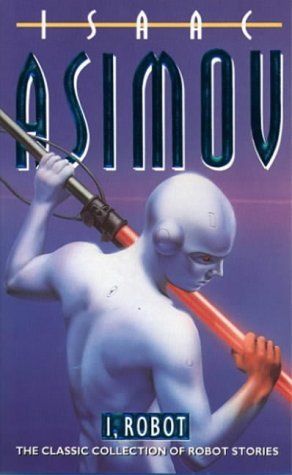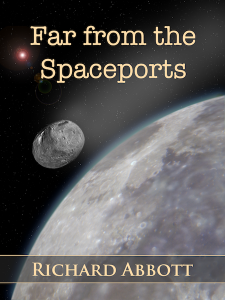I thought for the next few blogs I’d talk a little bit about artificial intelligence, seeing as how the relationship between the human investigator Mitnash and his virtual partner Slate is at the heart of Far from the Spaceports. Quite a few years ago now I used to work in AI, though at the pattern recognition end rather than personality creation.

AI has been a key strand in science fiction for many years, long before it came anywhere near possible in reality, and there is a long history of making entirely wrong guesses. Asimov’s earlier books certainly saw a key role for AI, and his Three Laws of Robotics rapidly became a basis not only for his mobile robots but also as a framework for the way other people thought about AI. But for what you might call serious work, like managing a company or a nation, Asimov was locked into the idea that the machines would be physically huge, filling whole buildings, and would need whole squads of highly specialised operatives to make them work. The concept of virtual environments which were geographically dispersed, like a company network, or indeed the Internet as a whole, escaped him.

Other writers or film makers had different blind spots. One often comes across fictional computers which are able to carry out vastly complicated calculations, analyse and direct the course of spaceships or the economies of worlds – yet output the end results of their deliberations on paper tape. It seems that the hardest things to get right are the interfaces that connect the human and machine worlds.
Often, authors have signalled the presence of artificial intelligence by means of stilted or artificial speech, failing in various ways to match human expectations. The android Data, in Star Trek, could never manage verbal contractions, so always said things like “I can not” rather than “I can’t”. This failure to attain informal speech lasted until the installation of an “emotion chip” which among other things upgraded his language faculties. Apparently verbal contractions are emotional rather than grammatical!

So I wanted to portray the relationship of Mitnash and Slate as one of normal intimacy between friends and coworkers. Each has the advantages and limitations of their particular “physiology”, and hopefully each emerges as a distinct personality. This led to a number of specific choices in the book, a couple of which I want to expand on today.
1. Slate, and the other personas, have a definite gender. Slate happens to be female, while some of the others are male. I’ve left it to readers to decide what this means, since she has no external biological indicators of gender. Some people will like the ascription of gender to machines, and no doubt some will not. There’s a sense in the book that machine gender is a relatively new advancement – Slate describes one particular persona they meet as “male, but only just”.
2. I didn’t want the baggage of clumsy language to get in the way of the relationship. So Slate is chatty, informal, but technically skilled and quirky in the way that a professional human coworker would be. Her communication is not only verbal in the strict sense, but includes a number of nonverbal noises that communicate things like satisfaction, frustration, encouragement etc – again, just like a human colleague does.
In terms of current technology we are a very long way from actually developing a persona like Slate. In recent years there have certainly been substantial breakthroughs in both hardware and software, but nothing I have yet seen persuades me that we are going to see virtual intelligences of this quality in the next decade or so. Within a century, perhaps – though this guess may be as far from the truth as guesses that others have made in the past.
Don’t forget – Far from the Spaceports is now on preorder: follow links to
- Amazon.co.uk
- Amazon.com
- Amazon.in
- and other global Amazon sites – search by name!
Next week… the role of man-machine intimacy…
